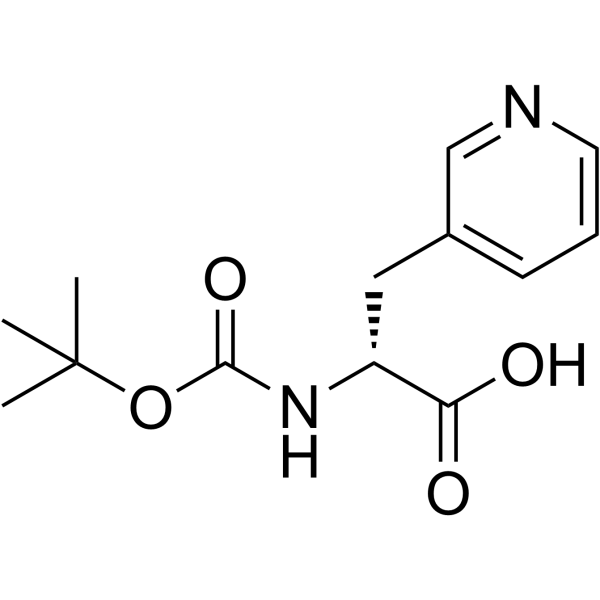112568-12-4
| Name | Antide |
|---|---|
| Synonyms |
D-Alaninamide, N-acetyl-3-(2-naphthalenyl)-D-alanyl-4-chloro-D-phenylalanyl-3-(3-pyridinyl)-D-alanyl-L-seryl-N-(3-pyridinylcarbonyl)-L-lysyl-N-(3-pyridinylcarbonyl)-D-lysyl-L-leucyl-N-(1-meth ylethyl)-L-lysyl-L-prolyl-
3-pyridinyl)-d-alanyl-l-seryl-n(sup6)-(3-pyridinylcarbonyl)-l-lysyl-n(sup6) AC-(D-NAL)-(D-P-CL-PHE)-(D-PAL)-SER-LYS(NICOTINOYL)-[D-LYS(NICOTINOYL)]-LEU-LYS(ISOPROPYL)-PRO-[D-ALA]-NH2 Iturelix N-[(4R,7R,10R,13S,16S)-16-{[(8S,11S,14R)-8-{[(2S)-2-{[(2R)-1-Amino-1-oxopropan-2-yl]carbamoyl}pyrrolidin-1-yl]carbonyl}-11-isobutyl-2-methyl-10,13,20-trioxo-20-(pyridin-3-yl)-3,9,12,19-tetraazaicosan-14-yl]carbamoyl}-7-(4-chlorobenzyl)-13-(hydroxymethyl)-4-(2-naphthylmethyl)-2,5,8,11,14-pentaoxo-10-(pyridin-3-ylmethyl)-3,6,9,12,15-pentaazaicosan-20-yl]nicotinamide (non-preferred name) N-Acetyl-3-(2-naphthyl)-D-alanyl-4-chloro-D-phenylalanyl-3-(3-pyridinyl)-D-alanyl-L-seryl-N-(3-pyridinylcarbonyl)-L-lysyl-N-(3-pyridinylcarbonyl)-D-lysyl-L-leucyl-N-isopropyl-L-lysyl-L-prolyl -D-alaninamide lyl AC-DNAL-D: P-CLPHE-DPAL-SER-LYS: NICOTINOYL-DLYS: NICOTINOYL-LEU-LYS: ISOPROPYL-PRO-DALA-NH2 |
| Description | Antide (D-21074) is a potent LHRH antagonist. Antide also can be used for the research of prostatic cancer. |
|---|---|
| Related Catalog | |
| In Vivo | Antide (subcutaneously; 1, 3, 6, 10 and 15 mg/kg; once or on 5 consecutive days) can induce a long-term chemical castration in adult male rats and cynomolgus monkeys[1]. Animal Model: Cynomolgus monkey and rat[1] Dosage: 1, 3, 6, 10 and 15 mg/kg Administration: Subcutaneous, once or on 5 consecutive days Result: Had a dose-dependent inhibitory effect on serum concentration of LH (only rat) and testosterone and on the weights of the testes, prostates and seminal vesicles. Achieved long-lasting castration-like effects at concentrations between 6 (less than or equal to 8 weeks) and 15 mg/kg (greater than 8 weeks) in the rat. Induced a prolonged inhibitory effect only at 15 mg/kg and the duration was only 2-3 weeks in the cynomolgus monkey. |
| References |
| Density | 1.3±0.1 g/cm3 |
|---|---|
| Boiling Point | 1798.0±65.0 °C at 760 mmHg |
| Molecular Formula | C82H108ClN17O14 |
| Molecular Weight | 1591.293 |
| Flash Point | 1041.2±34.3 °C |
| Exact Mass | 1589.795044 |
| PSA | 454.43000 |
| LogP | 4.91 |
| Appearance | Solid | White to off-white |
| Vapour Pressure | 0.0±0.3 mmHg at 25°C |
| Index of Refraction | 1.593 |
| Storage condition | −20°C |
| Symbol |

GHS08 |
|---|---|
| Signal Word | Danger |
| Hazard Statements | H360 |
| Precautionary Statements | P201-P308 + P313 |
| Personal Protective Equipment | Eyeshields;full-face particle respirator type N100 (US);Gloves;respirator cartridge type N100 (US);type P1 (EN143) respirator filter;type P3 (EN 143) respirator cartridges |
| Hazard Codes | T: Toxic; |
| Risk Phrases | R60 |
| Safety Phrases | S53-S22-S36/37/39-S45 |
| RIDADR | NONH for all modes of transport |
| WGK Germany | 3 |
| RTECS | AY2961700 |
|
~%
Detail
|
| Literature: Journal of Medicinal Chemistry, , vol. 35, # 23 p. 4270 - 4278 |
| Precursor 4 | |
|---|---|
| DownStream 0 | |




